
-
Find the right food for your petTake this quiz to see which food may be the best for your furry friend.Find the right food for your petTake this quiz to see which food may be the best for your furry friend.Featured products
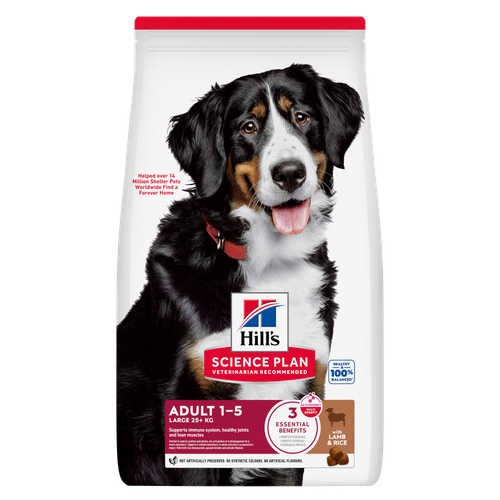 Large Breed Adult Dog Food
Large Breed Adult Dog FoodHill's Science Plan Large Breed Adult Dog Food with Lamb & Rice is a complete pet food, specially formulated with ActivBiome+ Multi-Benefit Technology.
This food is specifically designed to fuel the energy needs of large breed dogs during the prime of their life.Shop Now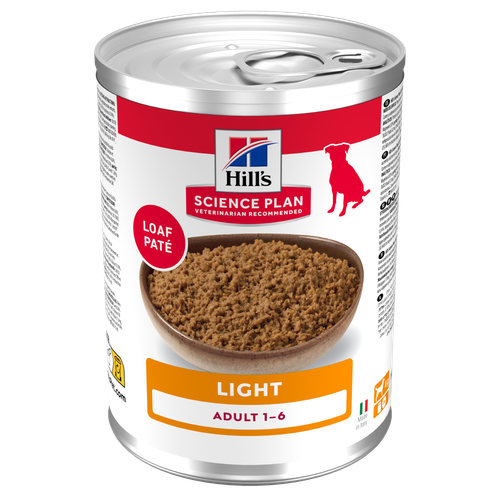 Adult Light Dog Food
Adult Light Dog FoodHill's Science Plan Light Adult Wet Dog Food is a complete premium pet food for adult dogs that tend to gain weight easily. This deliciously smooth loaf is formulated to deliver the appropriate amount of energy to support weight maintenance in adult dogs.
Shop Now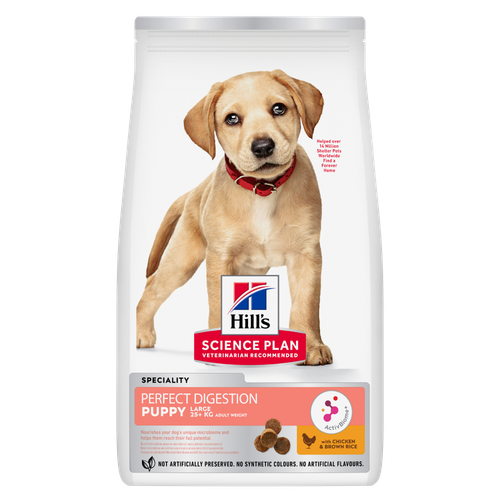 Perfect Digestion Large Breed Puppy Food
Perfect Digestion Large Breed Puppy FoodPrecisely balanced nutrition with Hill's ActivBiome+ prebiotic blend actively contributes to supporting digestive health and overall wellbeing to help your pet feel their best
Shop NowFeatured products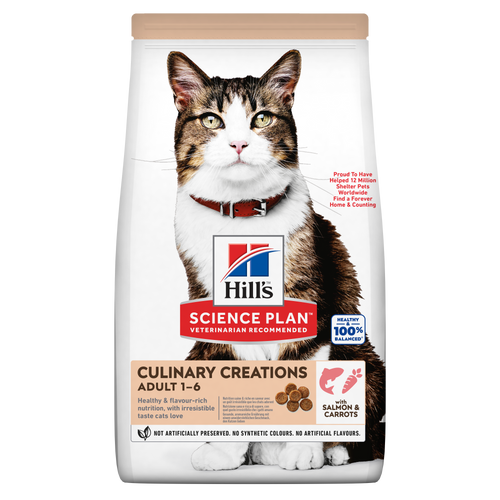 CULINARY CREATIONS ADULT CAT FOOD
CULINARY CREATIONS ADULT CAT FOODHill's Science Plan CULINARY CREATIONS Adult cat food with Salmon & Carrots was formulated to provide a great-tasting experience to cats. Its delicious flavour and texture are combine with essential nutrients to support cats' optimal health during the prime time of their life. Specially formulated with high-quality salmon protein, essential taurine for heart health & balanced minerals to support kidneys & bladder.
Shop Now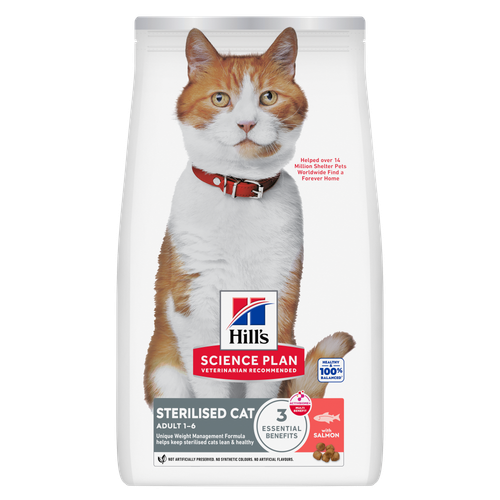 Sterilised Adult Cat Food
Sterilised Adult Cat FoodHill's Science Plan Adult Sterilised Cat Dry Food with Salmon is specially formulated with ActivBiome+ Multi-Benefit Technology. It is a precisely balanced nutrition, tailored to meet the needs of sterilised cats, to help keep sthem lean & healthy.
Shop Now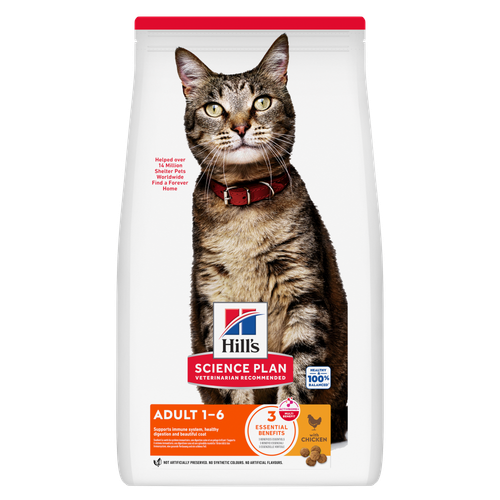 Adult Cat Food
Adult Cat FoodHill's Science Plan Adult Cat Food with Chicken is a complete pet food, specially formulated with ActivBiome+ Multi-Benefit Technology.
This food is specially formulated to fuel the energy needs of cats during the prime of their life.Shop Now -
Dog
- Dog Tips & Articles
-
Health Category
- Weight
- Food & Environmental Sensitivities
- Urinary
- Digestive
- Joint
- Kidney
-
Life Stage
- Puppy Nutrition
- Adult Nutrition
- Senior Nutrition
Cat- Cat Tips & Articles
-
Health Category
- Weight
- Skin & Food Sensitivities
- Urinary
- Digestive
- Kidney
-
Life Stage
- Kitten Nutrition
- Adult Nutrition
Featured articles The Incredible Science Behind Your Pet's Microbiome
The Incredible Science Behind Your Pet's MicrobiomeLearn what your pet's microbiome is, how it contributes to your pet's gut and overall health, and why nutrition is important in maintaining healthy microbiomes.
Read More Pet Nutrition: What Makes "Healthy" Pet Food Healthy? | Hill's Pet
Pet Nutrition: What Makes "Healthy" Pet Food Healthy? | Hill's PetIn people, the right diet is very important. If you are eating the wrong way for your metabolism, activity level, age and lifestyle you could end up with health issues.
Read More Microchipping: The Facts | Hill's Pet
Microchipping: The Facts | Hill's PetThe government has announced that as of April 2016, all dogs in the UK must be microchipped by law.
Read More -


If you aren't planning to breed your cat it's always best to have her spayed. Pregnancy in cats is a significant event, and if you have made the big decision to allow your cat to have kittens, you're in for quite an adventure.
A mother cat is usually more than capable of taking care of a birth on her own and it's normally best to leave her to it. However, there are a few things you can do to help make things easier.
Tell-tale signs
There are a number of signs that indicate your cat is pregnant. The first indicator may be that her heat cycle will stop. Another early sign is that your cat's nipples will swell and take on a darker, red colour. A pregnant cat will also eat more and possibly have bouts of 'morning sickness'. After five weeks, swelling of your cat's stomach will be noticeable and it will continue to swell until she gives birth.
You may see a dramatic change in behaviour. She might suddenly become particularly affectionate and eager to spend time around you. Conversely, you may also find your previously friendly cat becomes sullen and reclusive. Don't be concerned, both of these behaviours are entirely normal.
Cats usually manage birth with little difficulty. If you are concerned about your cat or want to confirm that she is pregnant, take her to your vet. They'll check to make sure your expecting mother is healthy and confirm the pregnancy with a physical check or an ultrasound.
Preparation
In the months leading up to the birth there's not a lot you need to do for your expecting mother, just make sure she continues to receive a good, healthy diet and lots of water.
As soon as pregnancy is confirmed you should switch her to a premium kitten food such as Hills Science Plan Kitten to provide extra nutrients for her and her kittens. Keep her on this food until the kittens are weaned. Don't be surprised if your mother-cat doesn't seem to eat a lot right away. She's has an abdomen full of kittens and will probably prefer to eat several times a day in small portions.
As the birth date approaches your cat will probably start looking for a quiet, soft place to nest in. Provide something like a towel-lined box for your cat and encourage her to use it. Don't be concerned however, if in the end, she chooses not to use it.


Tasty Tips
An imminent birth is usually marked by a milky discharge from your cat's nipples. If you're monitoring your cat's temperature, it will usually drop to below 38.9 degrees C just before delivery.
Once delivery begins your cat may start purring heavily and you will be able to see the contractions. Remember that in most cases a cat is entirely capable of getting through a delivery on her own.
Slowly does it
The average litter size is between 2 to 5 kittens. Usually a cat will pause for anywhere between 10 minutes to an hour between kittens. If you know she still has kittens inside her and has taken more than three hours to deliver the earlier ones, you should get her to the vet.
When the kittens are first delivered they should already be tearing out of the amniotic membrane or sac. Usually the mother will help them with this task, if she doesn't, you need to very carefully cut it open to release the kitten.
A mother cat will lick her kittens once they're delivered to stimulate their breathing. If she's too exhausted to do this, or is distracted by another birth, it may be up to you. Rub the kitten gently with a towel the same way a mother would lick it. You should tip the kitten so it is face down, this will help clear fluid from it's airway.
Placenta removal
After every kitten a placenta should also emerge. If a placenta is retained it can result in infection in the mother. Count to make sure you have seen a placenta for each kitten. Don't be surprised if the mother eats some or all of the placentas. This is perfectly normal and safe. If the mother, appears to have retained a placenta, again you need to get her to the vet quickly.
The mother cat will also usually chew off the umbilical cord. If she doesn't, you should help. Tie a piece of sturdy thread tightly around the cord about an inch from the kittens' body. Tie another loop of thread an inch further up the cord, then cut between the two loops with a sharp pair of scissors.
Once the kittens have been delivered and cleaned, they should immediately crawl to their mother's nipples and begin to suckle. At that point it's safe to let your cat and her kittens have some quite time. Congratulations on your new litter of kittens.


One of our staff authors prepared this article for you
Related products
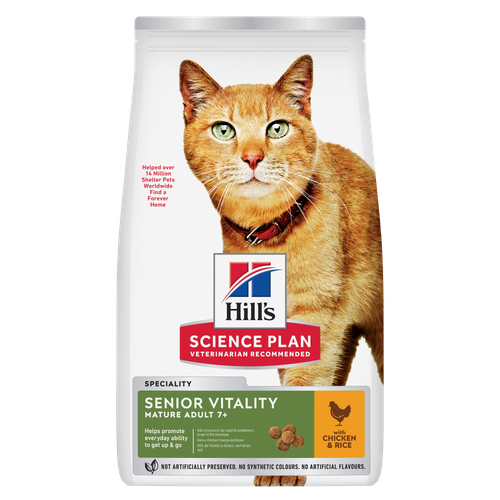
Hill's Science Plan Senior Vitality Cat Food with Chicken & Rice provides precisely balanced nutrition that helps promote their everyday ability to get up and go.

Hill's Science Plan Adult Sterilised Cat Dry Food with Salmon is specially formulated with ActivBiome+ Multi-Benefit Technology. It is a precisely balanced nutrition, tailored to meet the needs of sterilised cats, to help keep sthem lean & healthy.

Hill's Science Plan Adult Cat Food with Chicken is a complete pet food, specially formulated with ActivBiome+ Multi-Benefit Technology.
This food is specially formulated to fuel the energy needs of cats during the prime of their life.

Hill's Science Plan CULINARY CREATIONS Adult cat food with Salmon & Carrots was formulated to provide a great-tasting experience to cats. Its delicious flavour and texture are combine with essential nutrients to support cats' optimal health during the prime time of their life. Specially formulated with high-quality salmon protein, essential taurine for heart health & balanced minerals to support kidneys & bladder.
Related articles

Learn how your cat's poo can be a good indicator of her overall health, including how to spot unhealthy or abnormal cat poop and what it might mean.

Understand common skin issues in cats and how to manage them effectively. Learn signs and prevention, and get care tips. Find out more at Hill's Pet.

Cats with sensitive skin have special needs and even healthy cats can sometimes develop poor skin health. Learn more about sensitive skin symptoms in your cat, what you can do to help your pet feel more comfortable and get recommendations on sensitive skin cat food.

Learn about the causes of cat dermatitis, how to spot the symptoms and the best treatment options. Visit Hill's Pet for detailed guidance and tips.

Put your cat on a diet without them knowing
Our low calorie formula helps you control your cat's weight. It's packed with high-quality protein for building lean muscles, and made with purposeful ingredients for a flavourful, nutritious meal. Clinically proven antioxidants, Vitamin C+E, help promote a healthy immune system.
Put your cat on a diet without them knowing
Our low calorie formula helps you control your cat's weight. It's packed with high-quality protein for building lean muscles, and made with purposeful ingredients for a flavourful, nutritious meal. Clinically proven antioxidants, Vitamin C+E, help promote a healthy immune system.

